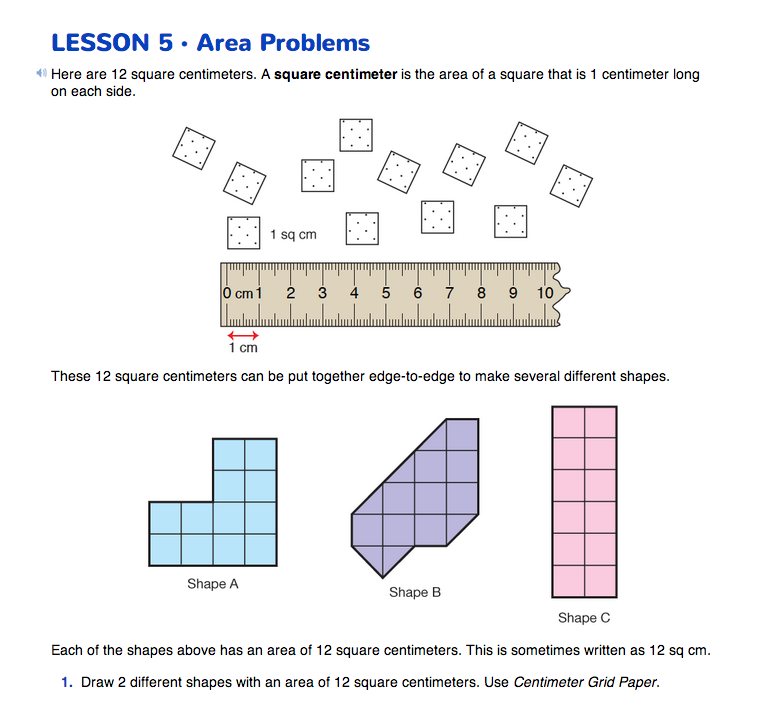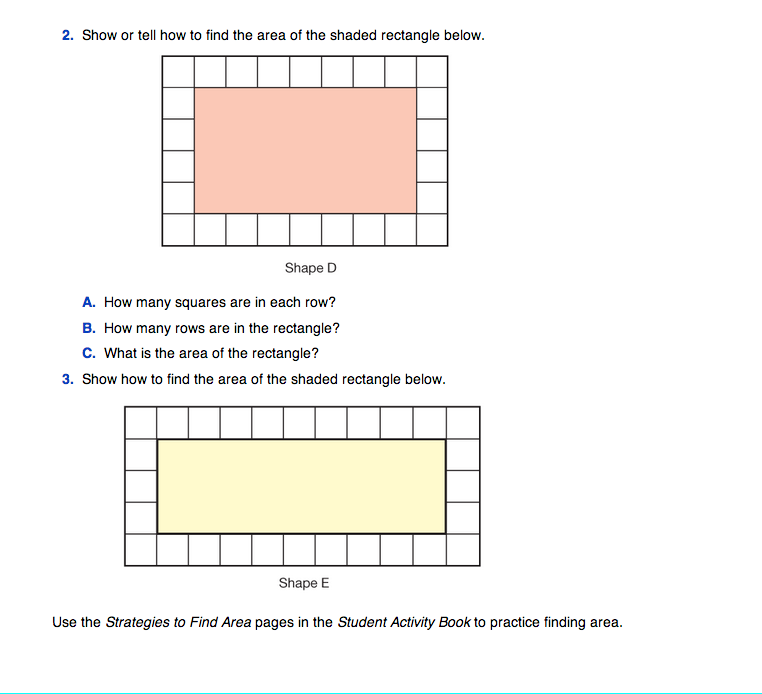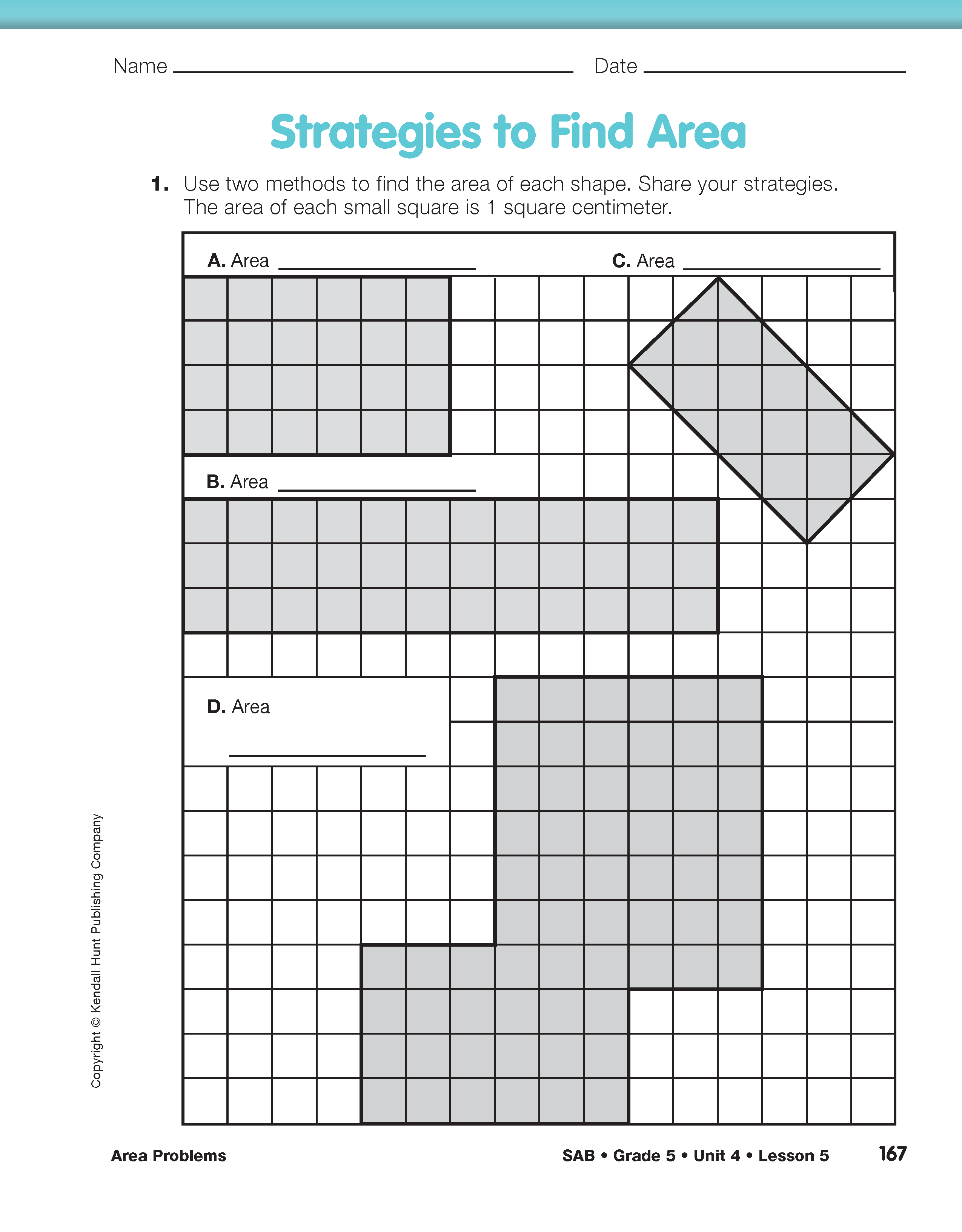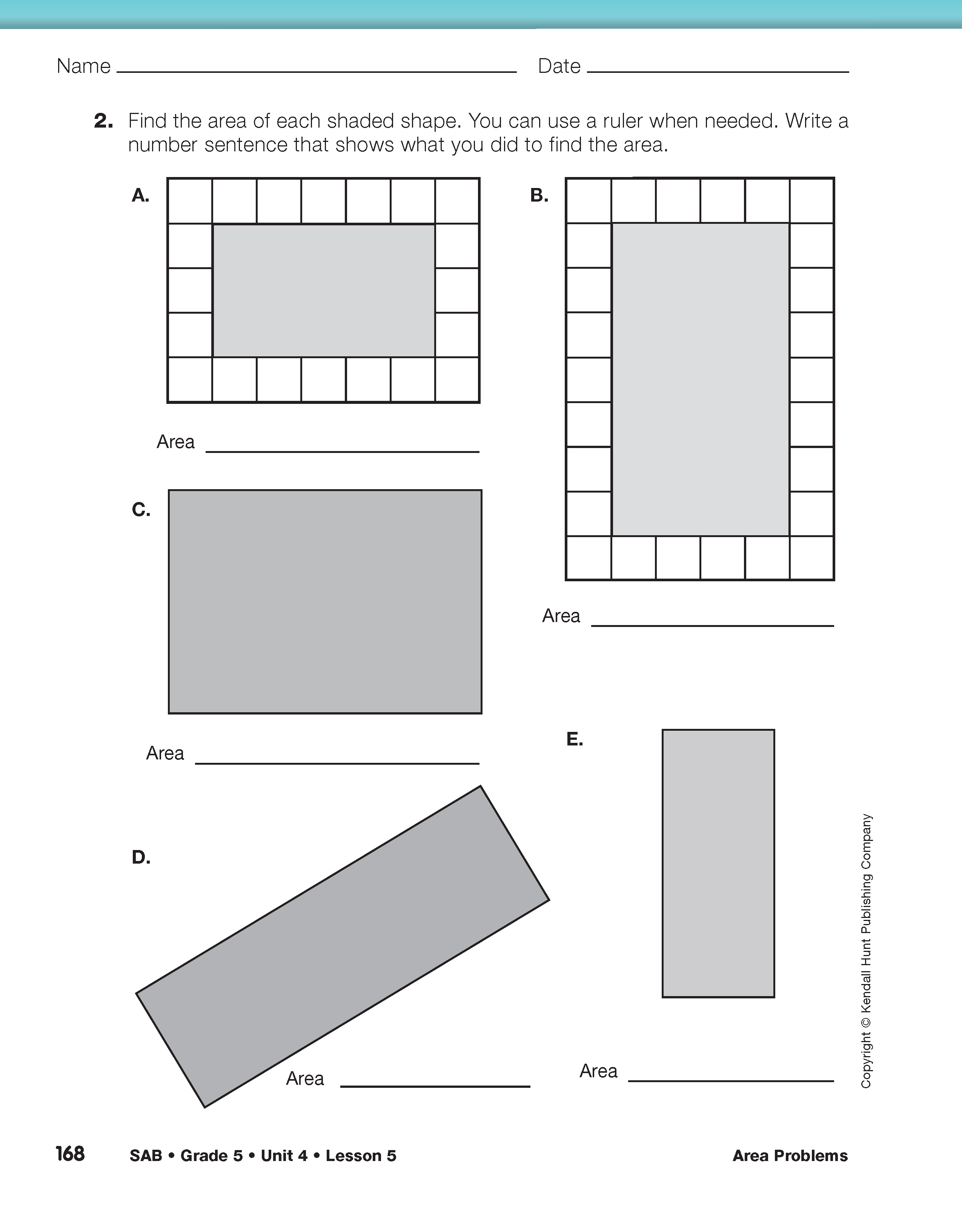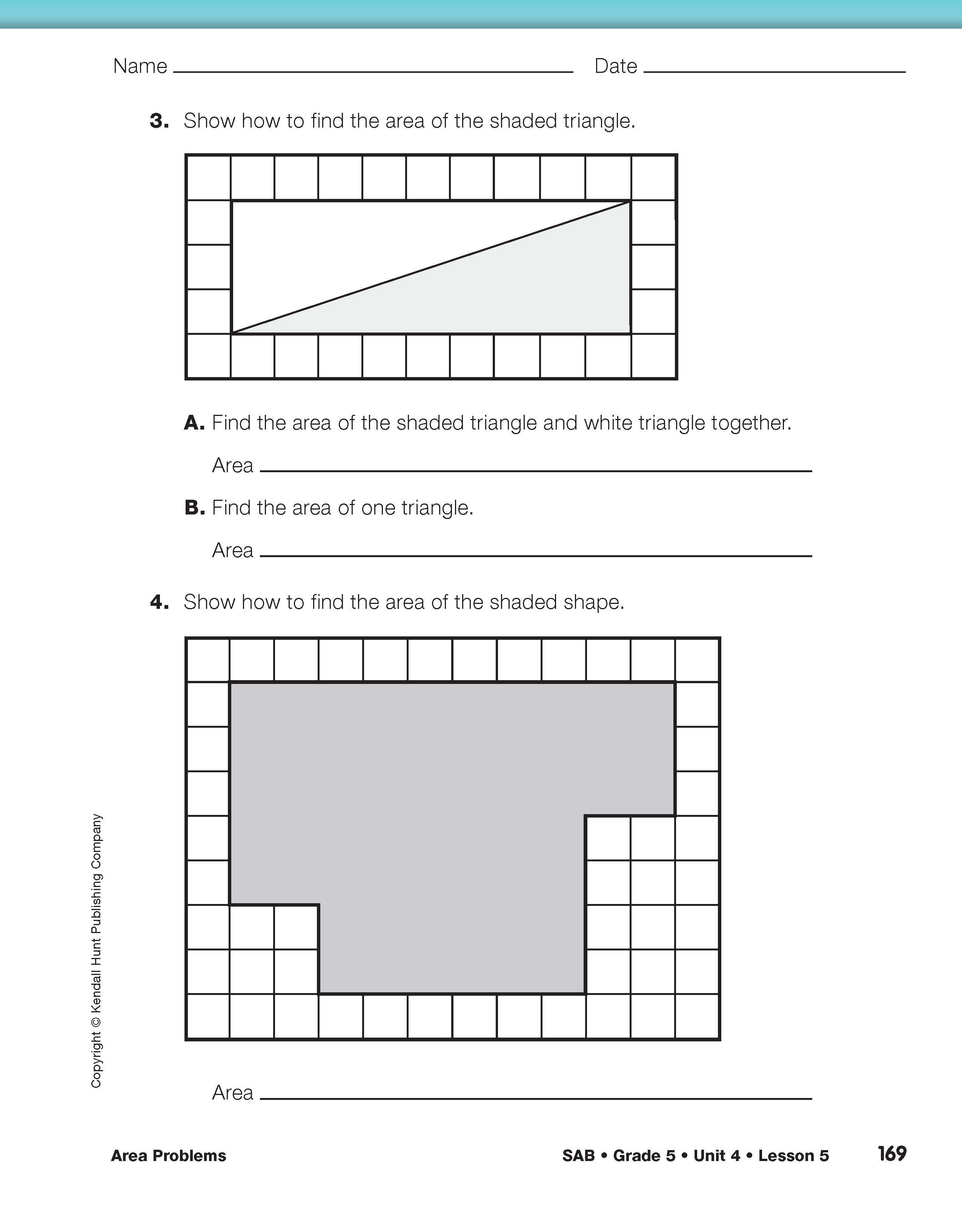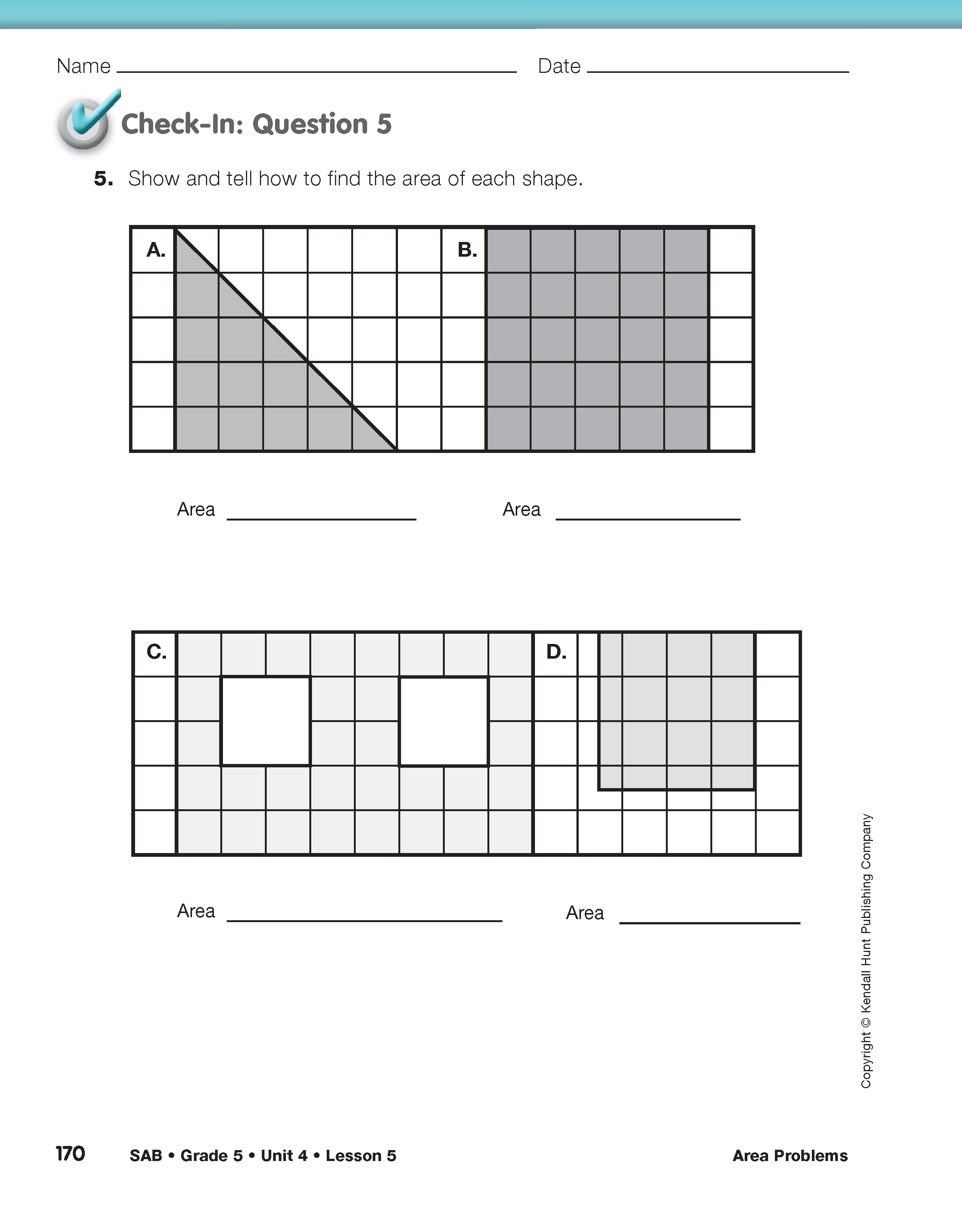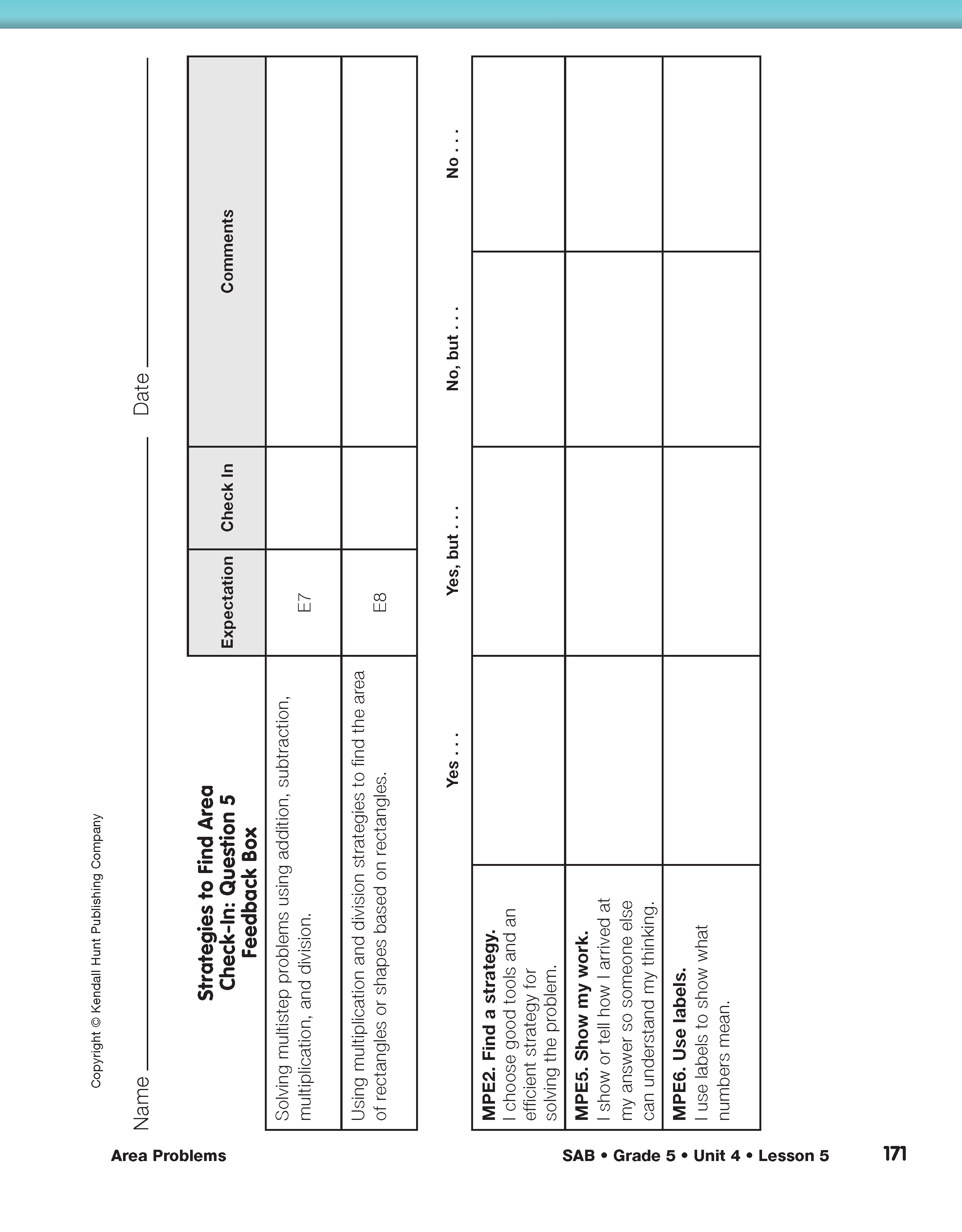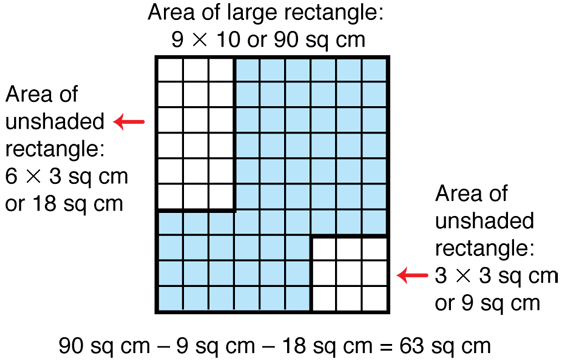Area Problems
Est. Class Sessions: 2Developing the Lesson
Find Area. Begin the lesson by directing students' attention to the Area Problems pages in the Student Guide. Read the introductory paragraphs together as a class. Students will learn that a square centimeter is the area of a square that is 1 centimeter long on each side. The area of each of the shapes on the page is the amount of space the shape covers, or 12 square centimeters.
Distribute one copy of the Centimeter Grid Paper Master to each student and assign Question 1. Students will use a ruler to draw two different shapes with an area of 12 square centimeters on the Centimeter Grid Paper.
Ask students to exchange their shapes with a partner. Instruct partners to verify that the shapes' areas are 12 square centimeters.
Assign Questions 2–3. Students will find the area of two rectangles. Students can find the area of Shape D in Question 2 by counting, but encourage a more sophisticated and efficient multiplication strategy. Note that there are 4 rows of 7 square centimeters each or 7 columns of 4 square centimeters each and that they can multiply or skip count to get 28 square centimeters. Students may also find half of the rectangle's area (2 × 7 = 14 sq cm) and then double it (14 + 14 = 28 sq cm). Similar strategies can be used to find the area of Shape E in Question 3.
Upon completion, discuss the various strategies students used to find the area of the rectangles, and compare the positive and negative aspects of each strategy. Generalize with students that the area of a rectangle is the length times the width. Remind students to use the correct units when sharing their answers.
Use Strategies to Find Area. Use the Strategies to Find Area pages in the Student Activity Book to provide practice with finding area. Assign Questions 1–4 to student pairs. In many questions, rectangles are drawn on a grid that can help students find length and width, with the exception of Question 1C. Students may simply count the squares and half squares in this question. For Question 2C–E, students will need to measure dimensions with a ruler. Likely, students will use multiplication and partitioning strategies to find area.
After students have had time to work through the problems, display the Strategies to Find Area pages and discuss Questions 1C–D. Ask students to look at the shape in Question 1C closely. They should notice that the rectangle is not made entirely of whole centimeter squares and that it has twelve half-centimeter squares. Students must find a strategy to combine two half-squares to make one whole centimeter square in order to find the total area, 16 square centimeters.
Ask:
If they don't suggest it, have students simply count the squares in this rectangle first. Next, have students use a ruler to measure each side to the nearest tenth of a centimeter. They will find that while the shape is still a rectangle, the diagonals are not whole centimeters long. If they multiply length (5.7 cm) by width (2.8 cm) on their calculators, 5.7 cm times 2.8 cm equals 15.96 sq cm. The answer displayed on the calculator, while close to 16 sq cm, will not be the exact area of the rectangle. Remind students that since they are using the rulers to only measure to the nearest tenth of a centimeter, they cannot measure the length of a side exactly and cannot find the rectangles exact area by multiplying 5.7 cm × 2.8 cm. See Content Note.
Ask:
One possible strategy to find the area of the shape in Question 1D is to divide this large shape into several smaller rectangles as shown in Figure 1. Find the area of each smaller rectangle and then add the areas together to arrive at the total area of 63 sq cm.
Another possible strategy is to draw the rectangle that surrounds this shape and find its area (90 sq cm) as shown in Figure 2. Find the area of the two unshaded rectangles (18 sq cm and 9 sq cm). Then subtract the total from 90 sq cm to find the area of the shaded shape.
Discuss Questions 2E–4.
Ask:
Students can fold a copy of the rectangle in Question 3 to find that the triangle is half the area of the rectangle. The height of the triangle is equal to the length of the rectangle and the base of the triangle is equal to the width of the rectangle. See Figure 3. The intention is not to develop the formula for the area of a triangle at this point but rather slowly build intuitive understanding. One possible strategy to find the area of a triangle is to draw a rectangle to surround the triangle and find its area. Divide this in half to find the area of the rectangle.
Ask:
Assign Check-In: Question 5 to individual students. Students will apply strategies to find the area of several shapes.















